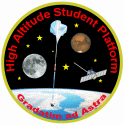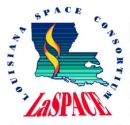



Payload 07 Information
Payload Flight Number:
Institution:
Payload Title:
O3 Sensor Technology Development and Atmospheric Experimentation
Student Leader:
Faculty Advisor:
Payload class:
SMALL
Payload ID Number:
07
Mass:
1.75 kg
Current:
0.367A @ 30V
Serial Downlink:
1200
Analog Downlink:
No
Serial Commands:
No
Discrete Commands:
No
Payload Specification & Integration Plan
Due:
Delivered:
Payload Integration Certification
Scheduled:
Actual:
Flight Operation Plan
Due:
Delivered:
Final Flight / Science Report
Due:
Delivered:
Abstract:
There are several significant and unanswered questions regarding ozone (O3), and ozone depletion in the atmosphere. These issues demand the development of new reliable and cost effective sensors to monitor ozone over the Earth. One such unique, easily produced in mass, and newly developed (patent pending) sensor array, by the University of North Florida (UNF), is the solid-state nanocrystalline Indium Tin Oxide (ITO) thin film gas sensor. These sensors do not need to operate at very high operating temperature and follow as an improvement compared to the earlier reported tungsten oxide sensors by Hansford et al. (2005). In recent months, ITO gas sensors were tested and calibrated with different concentration of ozone (0.5 ppm to 14 ppm) under different pressures using the Low-pressure Test Bed at the Space Life Science Lab (SLSL), Kennedy Space Center (KSC-XA) as a student project through Space Florida with the support of NASA. Our next goal in this process is to launch the sensors with their interface circuitry into the upper atmosphere using a long duration high altitude balloon. This flight compares and validates ITO sensors with the currently used electro-chemical ozone sensors. This project continues through the Dakota Space Society student led consortium.
Monthly Briefings:
|